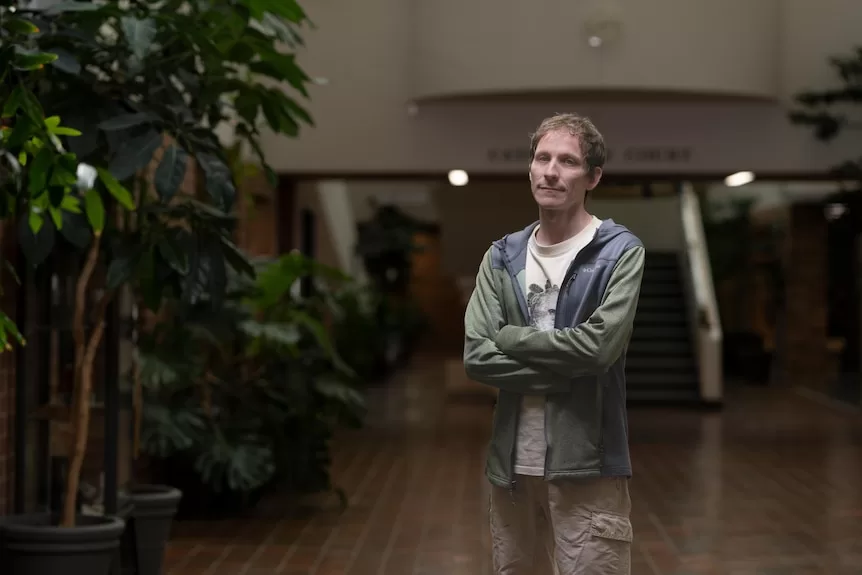You may be familiar with the use of DNA technology for catching criminals and solving crimes, but now a group of scientists from Canberra and the United Kingdom are using DNA to save trafficked parrots.
The illegal wildlife trade is the world’s fourth most lucrative organised crime operation, worth over $30 billion a year.
Within that illegal wildlife trade, parrots are the most trafficked bird, according to George Olah from the Fenner School of Environment and Society at the Australian National University (ANU).
“We are have around 400 parrot species around the world, and more than 300 have been registered in the wildlife trade,” Dr Olah told ABC Radio Canberra.
“The pet trade is one of the main drivers for that. They’re really intelligent, they’re very colourful, so people like them, keep them as pets. And I think that’s the main reason that’s fuelling the trade.
“It’s huge, it’s big money [at] stake. It’s very high reward but low risk … the punishment is not as strong as in those other crimes.”
So, in a bid to temper the trafficked parrot trade, scientists from the ANU and King’s Forensics in the UK are establishing a parrot genetic database, which they hope will form a map of where each parrot species lives — and where they’re being poached from.
‘It’s kind of like the Interpol database’
The database will be created using a forensic genomic toolkit, which has been designed to identify where the birds originate through their DNA.
The toolkit uses “cutting-edge, but low-cost” portable sequencing technology, which means research can be done in the field.
Samples are collected from species via a feather or a drop of blood from a chick, and then fed into a genetic database which authorities can consult when investigating parrots they believe have been taken illegally from the wild.
Eventually, the data collected will form a map of the trade network, showing which birds are being trafficked from where.
“It’s kind of like the Interpol database of finding missing people and identifying missing people,” Dr Olah said.
“Because we are actually trying to identify not just the species, but also where the individuals are coming from — which population, which regions.
“For example, for the ivory trade, they used DNA to identify where the ivory is coming from, which part of Africa.
“Of course, the parrots can’t tell us where they coming from, and often they end up dead by the time of confiscation. So this is an important tool to tag in and then use genetics to try and track them back.”
Dr Olah said he was hopeful the project would also help restore confiscated parrots to their homes.
“If once they are confiscated and they’re actually still alive, it’s very important to revise them to the place of origin. But if you don’t know where they’re coming from, it’s like a missing person — how you can return them to the family if you don’t know where they coming from?” Dr Olah said.
“If we can prove to the authorities that the birds came from a particular island, then after health screening and disease testing, we can facilitate them being moved back there.”
He said they were also testing for zoonotic diseases, which can pose a risk to humans.
“So there is a public health concern what these species and other wildlife traders,” he said.
From Indonesia to the world
The next stage of the project will see Dr Olah and his team heading to Indonesia next week, to begin collecting DNA from the most popular trafficked species there.
“We identified Indonesia as the number one country for parrot conservation, because they have lots of parrot species, high endemism — so species that can only be found in that region,” he said.
“And there’s also lots of issues on the wildlife trade, they actually confiscate lots of birds there.
“So it’s a good start of the study, it’s going to be kind of our proof of concept — just the selected species, and mostly traded species parrots in Indonesia.”
The parrot DNA database will also help local law enforcement direct their attention to regions with high trafficking activity.
“The local law enforcement agencies often have a limited budget, and we’re trying to help them to focus on certain regions,” Dr Olah said.
“For example, if most of the parrot species are coming from just a few islands, they can focus their funds that way.
“So we have to reconstruct forensically this wildlife trade nationally, and hopefully, later, internationally as well.”
The project will run in Indonesia in collaboration with local scientists and the government for three years, including training in using the forensic genomic toolkit.
And after Indonesia, they hope to go global.
“For the long term, I’m actually really hoping that this database can be extended,” Dr Olah said.
“It’s scalable, so we can include any other species once the techniques are worked out, and the sequencing and what database we’re using. We can include more species, and also other regions, as well.
“And so once it’s an international database, something confiscated in Europe, we could tell whether it’s coming from which part of the world.
“I really hope that it’s going to be a much larger scale study later on.”
